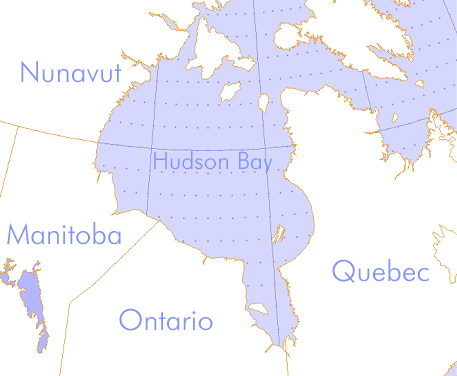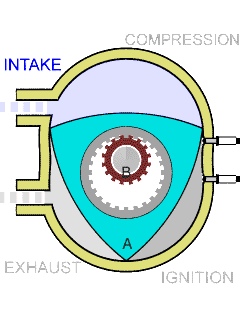|
Agostino Ramelli
Agostino Ramelli (1531–ca. 1610) was an Italian engineer best known for writing and illustrating the book of engineering designs ''Le diverse et artificiose machine del Capitano Agostino Ramelli'', which contains, among others, his design for the bookwheel. Ramelli was born in Ponte Tresa or Mesanzena, today in Switzerland. During the Siege of La Rochelle (1572–1573), he successfully engineered a mine under a bastion and breached the fortification,"One Good Turn: A Natural History of the Screwdriver and Screw" Witold Rybczynski p.47 making him popular with his commander, Henri d'Anjou, who later became King Henri III of France. In 1588, Ramelli published ''Le diverse et artificiose machine del Capitano Agostino Ramelli'', or ''The various and ingenious machines of Captain Agostino Ramelli''. The book contains 195 designs, over 100 of which are water-raising machines, such as water pumps or wells.Brashear, RonaldRamelli's Machines Smithsonian Libraries. Other d ... [...More Info...] [...Related Items...] OR: [Wikipedia] [Google] [Baidu] |
Agostino Ramelli From Diverse Et Artificiose Machine Cropped
Agostino may refer to: *Agostino (name) * ''Agostino'' (film), an Italian film directed by Mauro Bolognini * ''Agostino'' (novel), a short novel by Alberto Moravia *, an Italian coaster See also *Agostini (other) *D'Agostino (other) D'Agostino, a Sicilian noble lineage originated at least in the thirteenth century D'Agostino may also refer to: * D'Agostino (surname), an Italian surname * D'Agostino's K-squared test, a goodness-of-fit measure in statistics * D'Agostino Su ... * Augustino (other) {{disambiguation ... [...More Info...] [...Related Items...] OR: [Wikipedia] [Google] [Baidu] |
Bridges
A bridge is a structure built to span a physical obstacle (such as a body of water, valley, road, or railway) without blocking the path underneath. It is constructed for the purpose of providing passage over the obstacle, which is usually something that is otherwise difficult or impossible to cross. There are many different designs of bridges, each serving a particular purpose and applicable to different situations. Designs of bridges vary depending on factors such as the function of the bridge, the nature of the terrain where the bridge is constructed and anchored, the material used to make it, and the funds available to build it. The earliest bridges were likely made with fallen trees and stepping stones. The Neolithic people built boardwalk bridges across marshland. The Arkadiko Bridge, dating from the 13th century BC, in the Peloponnese is one of the oldest arch bridges in existence and use. Etymology The ''Oxford English Dictionary'' traces the origin of the word ''bri ... [...More Info...] [...Related Items...] OR: [Wikipedia] [Google] [Baidu] |
Italian Military Engineers
Italian(s) may refer to: * Anything of, from, or related to the people of Italy over the centuries ** Italians, a Romance ethnic group related to or simply a citizen of the Italian Republic or Italian Kingdom ** Italian language, a Romance language *** Regional Italian, regional variants of the Italian language ** Languages of Italy, languages and dialects spoken in Italy ** Italian culture, cultural features of Italy ** Italian cuisine, traditional foods ** Folklore of Italy, the folklore and urban legends of Italy ** Mythology of Italy, traditional religion and beliefs Other uses * Italian dressing, a vinaigrette-type salad dressing or marination * Italian or Italian-A, alternative names for the Ping-Pong virus, an extinct computer virus * ''Italien'' (magazine), pro-Fascist magazine in Germany between 1927 and 1944 See also * * * Italia (other) * Italic (other) * Italo (other) * The Italian (other) * Italian people (other) Italian ... [...More Info...] [...Related Items...] OR: [Wikipedia] [Google] [Baidu] |
1610 Deaths
Some have suggested that 1610 may mark the beginning of the Anthropocene, or the 'Age of Man', marking a fundamental change in the relationship between humans and the Earth system, but earlier starting dates (ca. 1000 C.E.) have received broader consensus, based on high resolution pollution records that show the massive impact of human activity on the atmosphere. Events January–March * January 6 – ''Nossa Senhora da Graça'' incident: A Portuguese carrack sinks near Nagasaki, after fighting Japanese samurai for four nights. * January 7 – Galileo Galilei first observes the four Galilean moons of Jupiter: Ganymede, Callisto, Europa and Io, but is unable to distinguish the latter two until the following day. * February 24 – English courtier Thomas Roe sets out on an expedition to The Guianas and Amazon River. * March 13 – Galileo Galilei's treatise on astronomy, ''Sidereus Nuncius'', the first printed scientific record of observations thro ... [...More Info...] [...Related Items...] OR: [Wikipedia] [Google] [Baidu] |
1531 Births
Year 1531 ( MDXXXI) was a common year starting on Sunday of the Julian calendar. Events January–March * January 15 – The third session of the Reformation Parliament of King Henry VIII of England is opened. * January 26 – 1531 Lisbon earthquake: More than 30,000 people are killed in Portugal in an earthquake and subsequent tsunami. * February 27 – Lutheran princes in the Holy Roman Empire form an alliance known as the Schmalkaldic League. * February or March – Battle of Antukyah: Ahmad ibn Ibrahim al-Ghazi of the Adal Sultanate defeats the Ethiopian army. * March 28 – In India, the fortress of Mandu, capital of the Malwa Sultanate, falls as Malwa's Sultan Mahmúd II and his sons surrender to Bahadur Shah of Gujarat. * March 31 – King Henry VIII gives royal assent to numerous acts at the close of the session of the English Parliament, including the Poisoning Act 1530 (providing for boiling to death people convicted o ... [...More Info...] [...Related Items...] OR: [Wikipedia] [Google] [Baidu] |
Linda Hall Library
The Linda Hall Library is a privately endowed American library of science, engineering and technology located in Kansas City, Missouri, on the grounds of a urban arboretum. It claims to be the "largest independently funded public library of science, engineering and technology in North America" and "among the largest science libraries in the world." Description Established in 1946 through the philanthropy of Linda and Herbert F. Hall of the Hall-Bartlett Grain Co., the library is open to the public, and invites individual researchers, academic institutions, and companies from Kansas City and around the world to use the library's research-level collection. Its mission is to act as "guardian of the collective intellectual heritage with regard to the science, technology, and engineering disciplines." The library's William N. Deramus III Cosmology Theater, temporarily closed since 2020, shows images of the cosmos from the Hubble Space Telescope and NASA science missions. These imag ... [...More Info...] [...Related Items...] OR: [Wikipedia] [Google] [Baidu] |
Library Of Congress
The Library of Congress (LOC) is a research library in Washington, D.C., serving as the library and research service for the United States Congress and the ''de facto'' national library of the United States. It also administers Copyright law of the United States, copyright law through the United States Copyright Office, and it houses the Congressional Research Service. Founded in 1800, the Library of Congress is the oldest Cultural policy of the United States, federal cultural institution in the United States. It is housed in three buildings on Capitol Hill, adjacent to the United States Capitol, along with the National Audio-Visual Conservation Center in Culpeper, Virginia, and additional storage facilities at Fort Meade, Fort George G. Meade and Cabin Branch in Hyattsville, Maryland. The library's functions are overseen by the librarian of Congress, and its buildings are maintained by the architect of the Capitol. The LOC is one of the List of largest libraries, largest libra ... [...More Info...] [...Related Items...] OR: [Wikipedia] [Google] [Baidu] |
Science History Institute
The Science History Institute is an institution that preserves and promotes understanding of the history of science. Located in Philadelphia, Pennsylvania, it includes a library, museum, archive, research center and conference center. It was founded in 1982 as a joint venture of the American Chemical Society and the University of Pennsylvania, as the Center for the History of Chemistry (CHOC). The American Institute of Chemical Engineers (AIChE) became a co-founder in 1984. It was renamed the Chemical Heritage Foundation (CHF) in 1992, and moved two years later to the institution's current location, 315 Chestnut Street in Old City. On December 1, 2015, CHF merged with the Life Sciences Foundation, creating an organization that covers "the history of the life sciences and biotechnology together with the history of the chemical sciences and engineering." As of February 1, 2018, the organization was renamed the Science History Institute, to reflect its wider range of histori ... [...More Info...] [...Related Items...] OR: [Wikipedia] [Google] [Baidu] |
Wankel Engine
The Wankel engine (, ) is a type of internal combustion engine using an eccentric (mechanism), eccentric Pistonless rotary engine, rotary design to convert pressure into rotating motion. The concept was proven by German engineer Felix Wankel, followed by a commercially feasible engine designed by German engineer Hanns-Dieter Paschke. The Wankel engine's rotor is similar in shape to a Reuleaux triangle, with the sides having less curvature. The rotor spins inside a figure-eight-like epitrochoidal housing around a fixed gear. The midpoint of the rotor moves in a circle around the output shaft, rotating the shaft via a Cam (mechanism), cam. In its basic gasoline-fuelled form, the Wankel engine has lower thermal efficiency and higher exhaust emissions relative to the Four-stroke engine, four-stroke reciprocating engine. This thermal inefficiency has restricted the Wankel engine to limited use since its introduction in the 1960s. However, many disadvantages have mainly been overcome ... [...More Info...] [...Related Items...] OR: [Wikipedia] [Google] [Baidu] |
Mill (grinding)
A mill is a device, often a structure, machine or kitchen appliance, that breaks solid materials into smaller pieces by grinding, crushing, or cutting. Such comminution is an important unit operation in many processes. There are many different types of mills and many types of materials processed in them. Historically, mills were powered by hand or by animals (e.g., via a hand crank), working animal (e.g., horse mill), wind ( windmill) or water (watermill). In the modern era, they are usually powered by electricity. The grinding of solid materials occurs through mechanical forces that break up the structure by overcoming the interior bonding forces. After the grinding the state of the solid is changed: the grain size, the grain size disposition and the grain shape. Milling also refers to the process of breaking down, separating, sizing, or classifying aggregate material (e.g. mining ore). For instance rock crushing or grinding to produce uniform aggregate size for construc ... [...More Info...] [...Related Items...] OR: [Wikipedia] [Google] [Baidu] |
Water Well
A well is an excavation or structure created on the earth by digging, driving, or drilling to access liquid resources, usually water. The oldest and most common kind of well is a water well, to access groundwater in underground aquifers. The well water is drawn up by a pump, or using containers, such as buckets that are raised mechanically or by hand. Water can also be injected back into the aquifer through the well. Wells were first constructed at least eight thousand years ago and historically vary in construction from a sediment of a dry watercourse to the qanats of Iran, and the stepwells and sakiehs of India. Placing a lining in the well shaft helps create stability, and linings of wood or wickerwork date back at least as far as the Iron Age. Wells have traditionally been sunk by hand digging, as is still the case in rural areas of the developing world. These wells are inexpensive and low-tech as they use mostly manual labour, and the structure can be lined with b ... [...More Info...] [...Related Items...] OR: [Wikipedia] [Google] [Baidu] |






